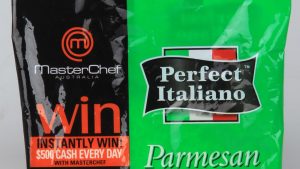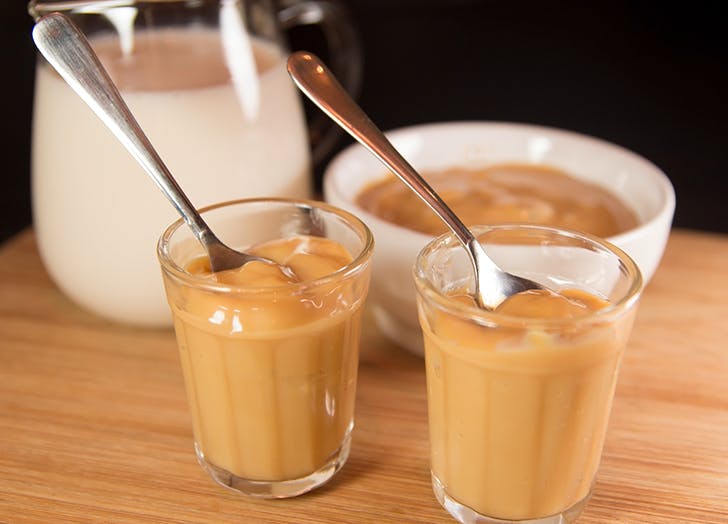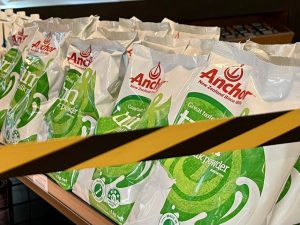
You may be more than familiar with caramel, since its sticky-sweet splendor has made everything from ice cream to brownies to broiled fruit taste a million times better over the years, and it’s pretty ubiquitous on restaurant menus and in products on grocery store aisles. But what is dulce de leche? It’s about time you were acquainted with this unbelievably creamy, caramel-like confection that hails from Latin America. Read on for everything there is to know about dulce de leche, plus some of our favorite ways to use it at home (ya know, besides eating it straight from the can).

Dulce de leche, translating to “sweet of milk” in Spanish, is a thick, creamy, caramel-like sweet. It has a spreadable consistency that’s noticeably thicker than drizzle-ready caramel sauce, so it’s often used as a topping or filling for foods like wafer cookies, churros and cakes. It can be found all over South America and the Caribbean, but it’s particularly popular in Argentina and Uruguay, as well as in Peru and Chile where it’s called manjar or manjar blanco, meaning “delicacy” and “white delicacy” respectively. In Colombia, it’s called arequipe instead.
Also known as caramelized milk and milk jam in English, dulce de leche is made by slowly simmering milk and sugar together and stirring nonstop until the mixture browns. Some recipes also include vanilla bean seeds or vanilla extract, as well as baking soda, which speeds the cooking and prevents the mixture from turning bitter. As it heats, most of the liquid in the milk evaporates, which creates a thicker consistency. The sweet milk caramelizes and deepens in color, a result of the Maillard reaction (aka a chemical reaction that creates flavorful browning on food, whether it’s a seared steak or toasted marshmallow).
Since the old-school method of making dulce de leche is a time-consuming labor of love, many home cooks use sweetened condensed milk as a shortcut (yup, the same stuff that makes Vietnamese iced coffee so delicious and three-ingredient no-churn ice cream possible). It still takes about two to three hours of simmering to turn it into dulce de leche (or less than an hour in the Instant Pot), but you won’t need to stir it since it cooks right in the can while submerged in water. But the absolute laziest alternative is canned dulce de leche, which is already caramelized and ready to eat. As long as the ingredients include real sugar instead of corn syrup, it’ll be just as delectable as if you made it from scratch.

There are a variety of theories. Many sources trace this delicacy back to 19th-century Argentina. Legend has it that a maid who worked for politician Juan Manuel de Rosas was cooking milk and sugar and got called away from the stove, only to return some time later to find that her concoction had reduced into a thick brown spread. (It turns out that the first historical reference to dulce de leche on record is in the notes from a meeting between de Rosas and a political enemy, which is pretty solid supporting evidence in our book.) Another story credits Napoleon Bonaparte’s chef with the happy accident. Contrarily, an account from historian Daniel Balmaceda says dulce de leche was invented even earlier in 16th-century Indonesia. After the confection made its way to the Philippines, Spanish colonizers brought it back to Spain and the Americas.

First, let’s discuss the difference between dulce de leche, caramel and butterscotch. Caramel is pure sugar (or sugar and water) cooked down until it browns and thickens. Butterscotch is prepared the same way, but from butter and brown sugar. Dulce de leche is made from milk and sugar, and its brown color is a result of caramelized dairy rather than caramelized sugar (though it can also be made with coconut milk instead of dairy, as is done in Puerto Rico).
There’s also dulce de leche cortada, or miguelucho, which calls for curdled milk to create individual caramelized curds instead of a homogenous spread. It’s particularly popular in Cuba, as well as Venezuela and the Dominican Republic. While the dish is thought to have originated from a need to use up spoiled milk, many recipes call for adding something acidic to fresh milk (like lemon) to curdle it. It’s often also spiked with egg and cinnamon and served with raisins.
Cajeta is another type of dulce de leche made from goat milk; it’s especially common in Mexico. It has a distinct earthy, almost grassy flavor, but the same appearance and texture as cow’s milk dulce de leche. Also in Mexico is a dulce de leche-liked candy called leche quemada, meaning burned milk. Its main ingredients are milk, sugar and butter, which are cooked down until fudge-like.

If you can keep yourself from inhaling the whole can in one sitting, there are countless ways to use this decadent confection. Its most common uses are as a filling or spread, but it can also become thinner and more sauce-like when heated.
Traditional ways to use dulce de leche include alfajores, delicate Argentinian sandwich cookies; piononos, a Puerto Rican rolled sponge cake filled with jelly or dulce de leche, and postre chajá, a layered meringue cake from Uruguay. Dulce de leche is commonly eaten on toast for breakfast in some Latin countries as well. You may even see it as the crowning glory on milk-soaked tres leches cake, which some Latin bakeries refer to as cuatro leches instead.
If you just want to riff on some of your favorite baked goods and throw authenticity out the window, that works too. Slather it on crepes, cakes, waffles, wafers, cookies and brownies, use it as a filling for churros, add a dollop to bananas or yogurt or warm it up to drizzle over ice cream.
Here are six of our favorite ways to use canned dulce de leche, plus an easy recipe for homemade dulce de leche that starts with canned sweetened condensed milk:
- Homemade Dulce de Leche
- Brown Sugar Cookies with Dulce de Leche
- Vanilla Bean Thumbprint Cookies with Dulce de Leche
- Banoffee Pie with Honeycomb
- Caramel Chocolate Coconut Cheesecake
- Brown Butter Caramel Thumbprints
- Churro Milkshakes with Dulce de Leche

























